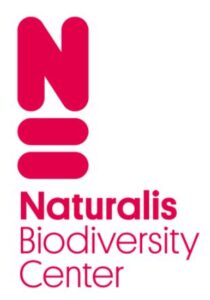
Vrije Universiteit, Amsterdam, The Netherlands

Objectives: To decipher conditions, timing and mechanisms of fluid release during the prograde Barrovian metamorphism of pelitic rocks. To fully quantify the fluid release framework in terms of age and metamorphic conditions for a natural “continuous section” laboratory. To set up and test crushing routines for vein quartz in different crustal levels using the new world leading multi-collector noble gas mass spectrometers at VUA (2013 vintage Helix MC, 2016 vintage ARGUS VI+).
Expected Results: Stepwise crushing 40Ar/39Ar analyses will result in provenance information for the fluid phases in terms of the K, Ca and Cl chemistries, and test the hypothesis of synchroneity-asynchroneity of vein formation during orogenic formation. ESR1 will accomplish an overview of stepwise crushing of vein quartz and minerals from their host rocks from different levels that provides the network partners a ‘time framework’ for vein formation.
Further information:
Objectives: To separate fluids sourced from prograde dehydration from those related to granitoid intrusions near the lower-middle crust interface in selected key areas in the Variscan belt. To determine the provenance of metals dissolved in the fluid phase in the inclusions by chemical and (Ar, Sr) isotopic fingerprints of the fluids and their host rocks. To determine which of the fluids are responsible for ore genesis, and why. To derive a time and length scale-constrained model of fluid motion and interaction of different volatile fluxes in the middle crustal domain.
Expected Results: The combination of different geochemical techniques will yield information on the major and trace elements in the inclusions. Fluid and mineral thermo-barometry will yield information on the ambient and fluid pressure and temperature at the time of entrapment, and Ar and Sr geochronology of trapped fluids and their host minerals will be used to shed light on the timing of entrapment. This will result in a model of the ore-genetic system in these key areas applicable to ore-forming processes and systems elsewhere.
Further information:

Westfälische Wilhelms Universität Münster, Germany

Objectives: To observe and measure nano-scale fluid-mineral interaction using analytical techniques including atomic force microscopy (AFM) to directly observe replacement reactions and porosity development in rock-forming minerals, such as carbonates and silicates. To constrain the chemistry of fluids for the optimal formation of porosity and fluid inclusions during replacement reactions. To use stable isotopes (18O, 13C) to track porosity development and element mobilization.
Expected Results
In situ experiments at the nano-scale will provide new constraints on reaction kinetics from time-sequences of images during reactions with specified solutions, that simulate natural fluids, constraining composition, IS, pH, T. On the basis of AFM data and interpretation, new systems will be investigated specifically for results showing the formation of interface-coupled processes that could lead to the development of porosity within the mineral and hence also fluid inclusions. This could also lead to the technical application of specifically designed geomimetic porous materials.
Further information:
Objectives: To use model mineral systems in hydrothermal experiments to develop porosity and fluid inclusions in rock-forming minerals such as silicates and carbonates. To constrain the conditions under which porosity and fluid inclusions are formed.
Expected Results: These constraints (P, T, t and chemical composition) in reacting minerals will highlight potential fluid permeation within rocks. Further experiments will optimise fluid inclusion formation and evolution. Such experiments using typical rock-forming minerals will provide insights into “real” scenarios in the rocks obtained from field excursions and hence an understanding of the conditions of formation of porosity and potential fluid flow within minerals and rocks.
Conditions for application: Both available positions require good background knowledge of mineralogy and chemistry. Candidates must have a MSc (or equivalent that allows entry into a PhD position) completed within the last 4 years. Additionally, candidates cannot have lived longer than 12 months in the country of application in the past 3 years. A good knowledge of English is essential.
Further information:

Open University, Milton Keynes, United Kingdom

Objectives: To develop new methods for applying light noble gas (Ar, He, Ne) concentrations and isotopic ratios for tracing fluid/melt mobility in the lower crust. To apply these methods to lower crustal samples of different bulk composition, strain history and melting history. To constrain the timescales of fluid mobility in the lower crust by using Ar/Ar chronology of different K-bearing (hydrous) minerals and fluid inclusions in K-free (anhydrous) minerals in conjunction with U-Pb zircon/monazite chronology. To use these data to constrain models of fluid reactivity and transport in the lower crust.
Expected Results: We expect to see significant differences in fluid mobility and reactivity between different lithologies and rocks that have melted or deformed during residence in the lower crust compared to rocks that have not. We expect the Ar/Ar chronology to show that timescales of fluid movement in the lower crust are short compared to the exhumation history. Together we expect all the data to constrain the time and length scales of fluid mobility in rocks of different bulk composition, strain history and melting history.
Further information:
Objectives: To determine the main mineral hosts for a variety of critical elements in lower crustal rocks of different bulk composition. To constrain the transport pathways (e.g. grain boundary percolation, shear zones, veins; in hydrous fluids or melts) of critical element mobilisation in the mid-lower crust. To constrain the length scales and timescales of critical mobilisation in the mid-lower crust.
Expected Results: We already know that critical elements are extracted from the mantle during melting and concentrate in the crust when these magmas crystallise. However, we have very little knowledge of the processes and mechanisms by which critical elements are transported through the crust and concentrated into economic deposits at the surface. This project will quantify the amount, mobility length scales, mobility timescales and transport processes of critical mobilisation in the lower crust.
Further information:

Rheinisch-Westfälische Technische Hochschule Aachen, Germany

Objectives: To develop microanalytical techniques for analysing low halogen concentrations in hydrous minerals. To characterize the halogen systematics of hydrous minerals and fluids along crustal-scale fluid flow paths. To establish halogen partitioning between fluids and hydrous minerals from high-temperature experiments.
Expected Results: Halogens are used as proxies for the source of groundwaters and fluids, but we have little knowledge of the halogen ratios of deep crustal fluids, and the processes which fractionate them during fluid-mineral interaction. The project results will quantify halogen exchange processes between hydrous minerals and aqueous fluid in crustal fluid flow systems and establish proxies for the ultimate source of deep Earth fluids.
Further information:
Objectives: To constrain fluid provenance in compaction and tectonically driven veining in the Variscan foreland basin of Avalonia, NW Europe. To obtain time constraints on the timing of vein development by absolute dating of the fluid inclusions in the vein minerals quartz, and adularia.
Expected Results: The Avalonian foreland basin was formed north of the Variscan mountain chain of central western Europe. It was folded during the Variscan Orogeny. In the slates of the Rheno-hercynicum veining is well studied and fluid pressure estimates are well constrained. The water from which the basins were crystallized is likely to be derived from compaction of marine sediments during diagenesis related to folding in the basin. The time range over which this occurred is unknown, and can be potentially constrained by direct dating of the fluid phase in the FIs.
Further information:

Università degli studi Milano Bicocca, Italy

Objectives: To decipher conditions, timing, mechanisms and composition of fluid/melt release from metabasites in lower-middle crust. To characterize the role of fluids in partial melting processes, involving both metabasites and metasediments, in the lower-middle crust. To define the difference in fluid mobility and mass transfer between the fluid/melts produced by metabasites with respect to those produced by metasediments. To develop a conceptual model for the physical, thermodynamic and transport capacity of fluids in the lower-middle crust. The project will focus on the Ivrea Zone and on the Argentera Massif (NW Italy), where Variscan deep crustal granulitic rocks, not recording the Alpine metamorphism, are exposed.
Expected Results: Field and petrological (P-T-t conditions) studies on partially-melted HP-mafic boudins (eclogites and HP-granulites), on hosting migmatites and related veins in order to characterize the processes responsible for the production and mobilization of fluids/melts during the whole evolution of the studied rocks. Petrological and geochemical data on fluid/melt inclusions in distinct mineral assemblages, in particular in peritectic minerals and in vein minerals, to identify the major, trace-elements composition and timing of the released fluids/melts, and the fluid-forming molecular species. Petrological and geochemical data on lithologies potentially recording metasomatic processes with these fluid/melts to characterize the mass transfer in the lower-middle crust. All the data will be compared to highlight similarities and difference in genetic processes, fluid composition, fluid mobility and mass transfer between fluid/melt released by metabasites and those produced by metasediments.
Further information:

Naturalis Biodiversity Center, Leiden, The Netherlands

Objectives: To build a model for the amounts and rates of fluxes of different fluid species from the mantle and lower crust to the middle and upper crust. To test this model using carefully selected field examples, experimental data, geochemical analyses and isotopic tracers. To quantify these fluxes and link them to geochronological data to constrain process rates. To compare these rates with rates of direct fluid flux in shear zones connecting the same reservoirs to estimate their relative efficiency.
Expected Results: The project will describe and quantify the amounts and rates of fluxes of different fluid species from the deepest two fluid reservoirs (mantle and lower crust; sources) to the shallowest two reservoirs (middle and upper crust; sinks). The ESR will produce an extensive survey of the relevant literature on fluid contents and fluid distribution/partitioning coefficients in mantle-derived and crustal-derived melts, and of fluid contents in a variety of sedimentary (including metamorphosed) crustal rocks. The ESR will link these with geochemical and experimental data. Together with data on the efficiency of melt escape and melt transfer from the lower crust, this will lead to a model of fluid flux from the lower crust into the middle and upper crust as a function of the transient thermal gradients in a given crustal level. Subtracting the fluids remaining within the igneous rocks upon cooling, generally as components of a critical set of minerals (e.g., micas, amphiboles, carbonates, scapolites), this gives the net flux of fluid species into the host rocks during transport (as decompression leads to fluid release) and final emplacement, a critical parameter for the redistribution of volatile elements between the reservoirs. It also leads to constraints on the metal and trace element flux into the middle and upper crust, which may guide novel ore exploration methods. This project thus provides critical input for fluid modelling, and constrains the large-scale transfer of ore-bearing fluids and the (re)mobilisation of elements crucial for society.
Further information:

Amphos21 Consulting S.L., Barcelona, Spain

Objectives: To use large scale Discrete Fracture Networks (DFN)-based reactive transport models to: (1) study how fracture granitic rocks are affected by weathering processes, (2) understand how mineral dissolution/precipitation processes impact hydrological patterns at large scale (i.e., the scale of interest for a safety assessment study for deep geological disposal of nuclear waste), (3) understand how fracture evolution, due to weathering, affects the potential of the rock to retain harmful radionuclides potentially released due repository failure.
Expected Results: Discontinuities are ubiquitous in crustal rocks as complex networks of fractures, joints and faults. These discontinuities represent preferential flow and transport pathways that might be critical when assessing contaminant transport due to e.g. the release of radionuclides from a deep geological repository for nuclear waste. Fracture alteration, due to geochemical reactions, have the potential to alter hydrological patterns at large scale. However, due to the high computational requirements of the underlying calculations, these processes have so far been studied at the scale of a single fracture only. By using High Performance Computing technologies, we aim at expanding here the assessment of fracture evolution due to geochemical reactions to the scale of multiple fractures, through a Discrete Fracture Network representation. The results of the study are expected to provide relevant information on how local-scale weathering process could alter hydrological patterns, and thus the underlying rock retention capacity of contaminant radionuclides, on a much a larger scale.
Further information:

Utrecht University - The Netherlands

Objectives: This project will determine the interplay of reaction-induced fluid pathway evolution and fluid chemistry using oxygen isotope tracing, in situ vibrational spectroscopy and 4D (3D space + time) X-ray tomography. In situ experiments will be carried out at pressure and temperature conditions akin to those in the upper and middle crust specifically focusing on Si-rich geothermal environments. In situ experiments will be coupled with post-mortem, multi-scale electron microscopy and numerical modelling.
Expected Results: The experiments will yield information into the physico-chemical mechanisms that determine the feedbacks between the evolution of reaction-induced fluid pathways and fluid chemistry. This will provide critical information for future models that can predict fluid pathway generations and fluid chemistries at elevated pressure and temperatures.
Further information:
